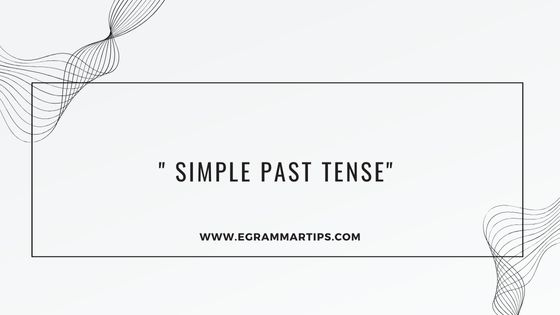
1. Overview:
The simple past tense is one of the most fundamental tenses in English. It expresses actions or events that occurred at a specific point in the past and are now completed. Unlike the present perfect, which connects the past to the present, the simple past deals only with events that are fully in the past.
2. Formation:
• Affirmative Sentences:
* The simple past tense of regular verbs is formed by adding -ed to the base form of the verb.
Example: “talk” becomes “talked.”
* For irregular verbs, there is no consistent pattern, so the past form must be memorized.
Example: “go” becomes “went.”
• Negative Sentences:
° Use the auxiliary verb “did” in its past form “did not” (didn’t) followed by the base form of the main verb (not the past form).
Example: “She did not (didn’t) walk to school.”
Here, “did” takes the past tense, and the main verb “walk” remains in its base form.
•Interrogative Sentences:
° Form questions by placing “Did” at the beginning of the sentence, followed by the subject and the base form of the verb.
Example: “Did they visit the museum?”
Again, the main verb remains in its base form.
3. Regular and Irregular Verbs:
•Regular Verbs:
° For most verbs, the past tense is formed by adding -ed to the base form.
° Spelling rules:
> If the verb ends in -e, just add -d (e.g., “love” → “loved”).
> For verbs ending in a consonant + -y, change the -y to -i and add -ed (e.g., “cry” → “cried”).
> For one-syllable verbs ending in a single vowel + single consonant, double the final consonant and add -ed (e.g., “stop” → “stopped”).
•Irregular Verbs:
° Irregular verbs do not follow a fixed pattern and must be memorized.
° Examples:”Buy” → “bought”
“Catch” → “caught”
“Write” → “wrote”
4. Usage:
Specific Time in the Past:
° The simple past is used to refer to a specific time when something happened.
° Example: “I met him yesterday.”
• Series of Completed Actions:
° The simple past is often used to describe a sequence of actions in the past.
°Example: “She entered the room, turned on the light, and sat down.”
•Duration in the Past (when the period is completed):
° Use the simple past to describe how long something lasted in the past.
° Example: “They lived in Paris for three years.”
•Habits in the Past:
° It can also describe past habits or repeated actions, often with adverbs of frequency (always, often, never).
° Example: “When I was a child, I often visited my grandparents.”
5. Time Expressions:
The simple past is frequently accompanied by time expressions that specify when something happened, such as:
•Yesterday: “She called me yesterday.”
•Last (night, week, month, year): “He graduated last year.”
•Ago: “They left the party an hour ago.”
•Specific dates or years: “In 1999, they moved to Spain.”
6. Subtle Differences with Other Tenses:
•Simple Past vs. Present Perfect:
° Simple Past: “I saw that movie last week.” (The action is complete and has no bearing on the present.)
° Present Perfect: “I have seen that movie.” (The action has relevance to the present moment, perhaps indicating that the experience is still fresh or has some impact now.)
• Simple Past vs. Past Continuous:
° Simple Past: “I worked there for three years.” (The action is complete.)
° Past Continuous: “I was working there when it happened.” (This emphasizes the ongoing nature of the action at a specific point in the past.)
7. Common Mistakes:
• Using the past form instead of the base form in negatives or questions:
Incorrect: “Did you went to the store?”
Correct: “Did you go to the store?”
•Confusing irregular verbs:
° Mistake: Using regular past forms for irregular verbs (e.g., “goed” instead of “went”).
° Solution: Regular practice and memorization of irregular verb forms.
I hope you enjoyed the lesson!